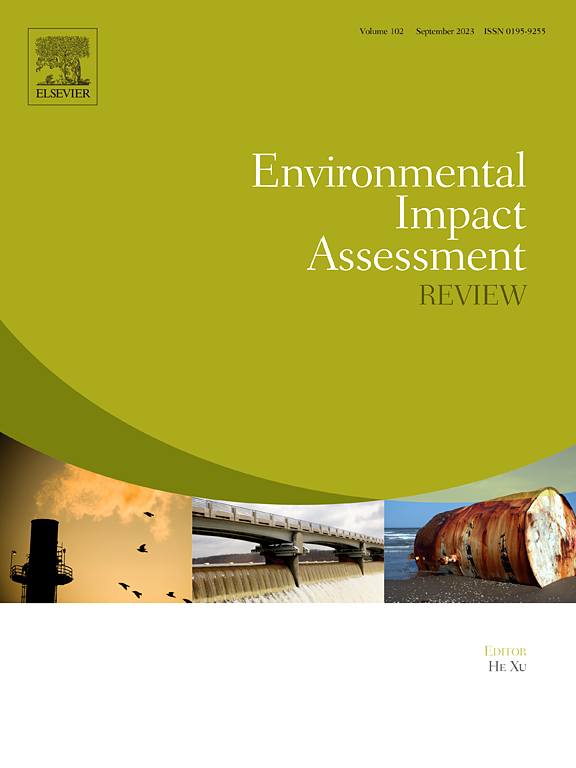The role of health impact assessment in mental health emergency preparedness, a scoping review
IF 9.8
1区 社会学
Q1 ENVIRONMENTAL STUDIES
引用次数: 0
Abstract
The Health Impact Assessment (HIA) process is used globally to evaluate population health effects from community policies, strategies, programs, and projects. Benefits of HIA can result from incorporating public health evidence in non-health decision making and offers opportunities to emphasize health equity. Specifically, HIA tools can be leveraged to address equity, cost-effectiveness, and efficacy of policies in emerging public health threats. In 2023, the U.S. Surgeon General announced social isolation and loneliness as an undervalued national epidemic and budding public health emergency. The use of HIA for public health emergency response planning represents a unique opportunity to address the increased risk of isolation and loneliness as facets of overall mental health and wellbeing. We aimed to review HIA use for public health emergencies and their associated impacts on mental health, focusing on loneliness and isolation as symptoms or markers of adverse mental health outcomes. A scoping review of the literature was performed and identified seven articles of interest. We offer insights on barriers, catalysts, and facilitators of the HIA process in emergency response planning. Additionally, we synthesize the identified barriers and facilitators to propose a conceptual thematic visual of HIA engagement to enhance community education and involvement in decision and policy making. Our findings suggest an increasing need for public health emergency preparedness approaches incorporating partnerships and community engagement, particularly through expanded application of HIA methodologies focused on social isolation and loneliness as determinants of mental health outcomes during and after emergencies.

健康影响评估在精神卫生应急准备中的作用,范围审查
健康影响评估(HIA)过程在全球范围内用于评估社区政策、战略、计划和项目对人口健康的影响。HIA的好处在于将公共卫生证据纳入非卫生决策,并提供强调卫生公平的机会。具体而言,HIA工具可用于解决新出现的公共卫生威胁中政策的公平性、成本效益和有效性问题。2023年,美国卫生部长宣布,社会隔离和孤独是一种被低估的全国性流行病,也是一种正在萌芽的突发公共卫生事件。将HIA用于公共卫生应急规划是一个独特的机会,可以解决作为整体心理健康和福祉方面的孤立和孤独风险增加的问题。我们的目的是回顾HIA在突发公共卫生事件中的应用及其对心理健康的相关影响,重点关注孤独和孤立作为不良心理健康结果的症状或标志。对文献进行了范围审查,并确定了7篇感兴趣的文章。我们提供了关于应急响应计划中HIA过程的障碍、催化剂和促进者的见解。此外,我们综合了已确定的障碍和促进因素,提出了HIA参与的概念性主题视觉,以加强社区教育和参与决策和政策制定。我们的研究结果表明,越来越需要结合伙伴关系和社区参与的公共卫生应急准备方法,特别是通过扩大HIA方法的应用,重点关注社会隔离和孤独,将其作为紧急情况期间和之后心理健康结果的决定因素。
本文章由计算机程序翻译,如有差异,请以英文原文为准。
求助全文
约1分钟内获得全文
求助全文
来源期刊

Environmental Impact Assessment Review
ENVIRONMENTAL STUDIES-
CiteScore
12.60
自引率
10.10%
发文量
200
审稿时长
33 days
期刊介绍:
Environmental Impact Assessment Review is an interdisciplinary journal that serves a global audience of practitioners, policymakers, and academics involved in assessing the environmental impact of policies, projects, processes, and products. The journal focuses on innovative theory and practice in environmental impact assessment (EIA). Papers are expected to present innovative ideas, be topical, and coherent. The journal emphasizes concepts, methods, techniques, approaches, and systems related to EIA theory and practice.
 求助内容:
求助内容: 应助结果提醒方式:
应助结果提醒方式:


